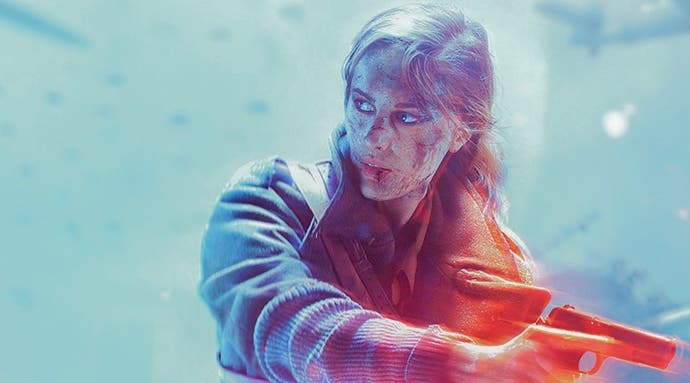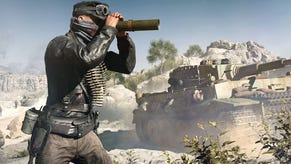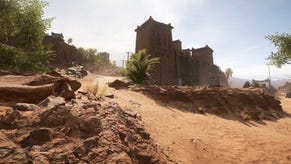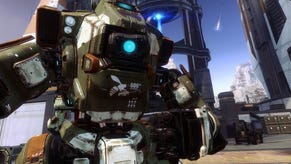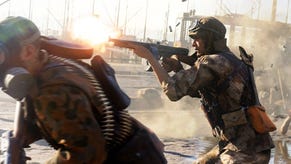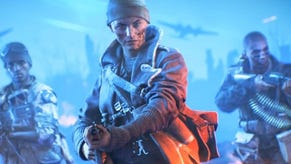Hands-on with Battlefield 5: how the small things matter in this massive-scale shooter
Frostbite evolved.
Players of the recent Battlefield 5 alpha have been witness to quite a treat. Building on DICE's excellent work in BF1 and Battlefront 2, we're looking at an exceptionally handsome game that, small bugs aside, almost feels like the finished article. It's visually outstanding in fact, the only disappointment - if you can call it that - being that the signs are pointing towards an evolution of the Battlefield formula and its Frostbite engine, as opposed to a full-on next-gen revolution.
Some might say that expectations of a wide-ranging revamp of the tech might seem somewhat optimistic, but there is a strong precedent. In 2011 - a full two years before the arrival of PlayStation 4 and Xbox One - DICE unleashed Battlefield 3, the game that laid the foundation for the series entries to follow, certainly from a technological perspective. Based on 64-bit processor support along with a requirement for DirectX 11 class graphics hardware, this was a developer essentially laying the foundation work for the console generation to come, with a cutting-edge PC version taking point.
At the same point in the current console generation, Battlefield 5's closed alpha - released only on PC - shows key embellishments, along with some crowd-pleasing enhancements to the destruction model. However, the overall aesthetic and some of its most impressive tricks will be familiar to those who've played Battlefield 1. The alpha reminds us of how good Frostbite is in dealing with massive, open levels. Select your capture point, click, and the overview of the map swoops down seamlessly into the in-game view - a cool trick from BF1 that still impresses in its successor.
Entering the first person view, I was really impressed by the sheer detail in the environments, and particularly in how the game handles snow - a crucial component in the Norway-based level showcased in the alpha. The attention to detail here is remarkable: snow itself is built from tiny structures and reflective surfaces that are much smaller than a single pixel, requiring a bespoke shader to capture the sparkling effect in-game. On top of that, BF5 looks to be using Geomeric's Enlighten global illumination technology, which adds that extra layer of believability to the nooks and crannies, successfully simulating light bounce in areas exposed to the sun, but not where the environment is in shade. Even the way shadows are cast is softer on snow, and sharper on more opaque surfaces like wood and metal. The closer you look at Battlefield 5, the more fidelity you discover - a remarkable state of affairs for a game built on vast scale.
On a more general level, snow is bumpy and irregular yet highly detailed, integrated well using displacement-based GPU tessellation - an area where Frostbite excels, and that no other engine I'm aware of really matches in terms of the scale of its implementation. The bumpy surface isn't static either - character movement and footsteps leave tracks in the snow, tank treads leave deep geometric impressions, while explosions leave craters or divots in the ground. Snow also benefits from exceptional GPU-driven particle effects and their artistry and subtlety in usage in BF5 is impressive. Snow flurries cascade over ridge lines, flowing downward and running over the ground. In bombed-out, exposed building interiors, snow bounces around the structure, gathering in the corners and rebounding off dynamic objects.
What we have here then is a wide-scale multiplayer shooter with support for up to 64-players (stress-tested in the closed alpha in the classic conquest and the new battle operations modes) with a vast open map - but with a remarkable, often surprising focus on the smaller details as well. The end result is a more believable world, but DICE doesn't stop there. The destruction model is improved over prior titles, with a level of carnage that's closer to the excellent Battlefield Bad Company 2. The play area is more dynamic, structures break apart more realistically (and there are more of them, based on this map's design, at least). I didn't see a house collapse in on itself like the good old days but it's abundantly clear that the play area is a lot more dynamic this time around - concealment is not cover!
As alpha code, there's not much we can read into performance this early on - particularly as DICE's pre-release optimisation has been impressive on recent titles. However, for what it's worth, the game is running well - though system requirements are currently a touch higher than Battlefield 1. A Ryzen 7 1700X paired with GTX 1070 hit GPU bottlenecks at 1440p on ultra settings, with the CPU becoming a limiting factor in some scenarios when resolution dropped to 1080p. It's a similar scenario for 1080p ultra gaming with mainstream favourites GTX 1060 and RX 580, paired with a Core i5 8400. The i5 set-up could maintain 1080p60 or close to it, but expansive views dropped frames on the CPU side, while alpha heavy scenes saw GPU as the primary limiting factor on performance. Tests with the DX12 render path - on the Ryzen side at least - produced a definite hitching. Hopefully CPU-based optimisation will be the focus here, but I'd also like to see a return of GPU dynamic resolution scaling, as seen in Star Wars Battlefront 2. The option to toggle both camera and object motion blur would also be handy, as the former doesn't really help out high-end competitive play.
Overall though, if this is the state of the PC game three months out from release, I'd say it's in fine shape. The game looks stunning in motion and the micro-level enhancements to visual fidelity are beautiful bearing in mind that Battlefield is fundamentally built on the concept of its vastness. Nothing has been lost in its sometimes-insane action, and the enhanced destruction model can only add further spice to the gameplay. The implications here for the mooted Battle Royale mode are also mouthwatering - titles like PUBG have the scale, but fall short in terms of localised detail, not to mention physics fidelity - areas where BF5 clearly excels. On a more general note, it'll be interesting to see when DICE decides to push the Battlefield model on to the next level, but that may well require a beefed-up next-gen console baseline to make that happen. In the here and now, the closed alpha PC game seems to suggest an iterative - but substantial - upgrade to an already impressive multiplayer experience.
